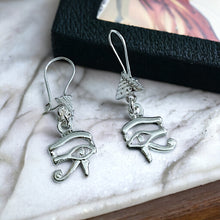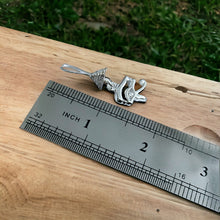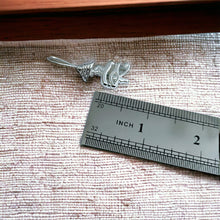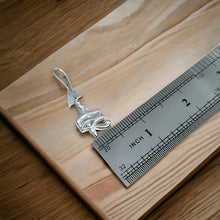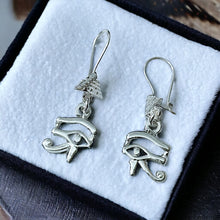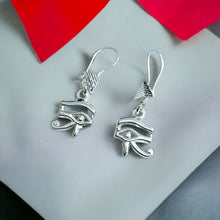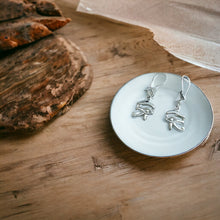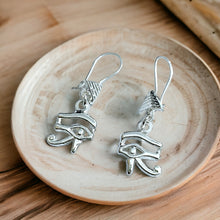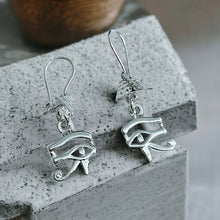Eye Of Horus Silver Earring
- Regular price
- $75.00 USD
- Sale price
- $75.00 USD
- Regular price
-
- Unit price
- /per
Sale
Sold out
Shipping calculated at checkout.
Adding product to your cart
The Eye of Horus Silver Earring: Inspired by ancient Egyptian mythology, this elegant piece pays homage to the protective symbol of the Eye of Horus, believed to bring health, prosperity, and protection. Crafted with sterling silver, it merges timeless beauty with ancient mystique, making it a symbol of both history and style.
- History: Ancient Egyptian symbol dating back to 3000 BCE, representing protection, royal power, and good health.
- Spiritually: Associated with Horus, the god of the sky, symbolizing protection and clarity of vision.
- Talisman: Thought to ward off evil and bring blessings, offering wearer spiritual strength.
- Handmade: Crafted with care and attention to detail, each earring unique in its design.
- Healing: Believed to promote healing energies, aiding in spiritual and emotional balance.
- Material: Made of sterling silver, symbolizing purity and strength.
- Symbolism: Eye represents divine protection, insight, and the all-seeing eye of intuition.
- How to Wear: Securely attach to earlobe, allowing the Eye of Horus to face outward, embracing its protective properties.
History Side For Those Who Are Interested
The Eye of Horus, also known as the Wadjet or the Eye of Ra, holds significant historical and cultural prominence in ancient Egyptian mythology and symbolism. Its origins trace back to the earliest periods of Egyptian civilization, dating as far back as the Predynastic era (c. 6000–3150 BCE), and its significance endured throughout the Pharaonic dynasties and beyond.
The Eye of Horus symbolizes protection, royal power, and good health. It is closely associated with Horus, one of the most significant deities in the ancient Egyptian pantheon. Horus was revered as the god of the sky, war, and kingship, often depicted as a falcon-headed deity. The eye was believed to be a powerful protective amulet, capable of warding off evil and providing healing.
The mythological origin of the Eye of Horus is rooted in a tale of conflict and restoration. According to ancient Egyptian mythology, Horus, the son of Osiris and Isis, sought vengeance against his uncle Set, who had murdered his father Osiris and usurped the throne of Egypt. In the ensuing battle between Horus and Set, Horus lost his left eye. However, the god Thoth, the deity of wisdom and magic, restored the eye, imbuing it with magical properties. This act of restoration symbolized healing, protection, and the triumph of good over evil.
The Eye of Horus is often depicted as a stylized human eye with distinctive markings, resembling the markings around the eye of a falcon. These markings are believed to represent the markings of a falcon's face, symbolizing the connection between the eye and the falcon-headed god Horus.
In addition to its mythological significance, the Eye of Horus also had practical applications in ancient Egyptian society. It was frequently used as a protective amulet, worn by both the living and the deceased, to ward off harm and ensure safe passage into the afterlife. The eye was also incorporated into funerary rituals, where it played a role in the process of mummification and burial.
Over time, the Eye of Horus became a widely recognized symbol in ancient Egyptian art, architecture, and religious iconography. It adorned temples, tombs, and royal regalia, serving as a potent symbol of divine protection and royal authority.
In conclusion, the Eye of Horus holds a rich and enduring legacy in ancient Egyptian culture, symbolizing protection, healing, and the eternal struggle between good and evil. Its iconic imagery continues to captivate and inspire fascination to this day, serving as a testament to the enduring power of ancient Egyptian mythology and symbolism.
Use left/right arrows to navigate the slideshow or swipe left/right if using a mobile device











